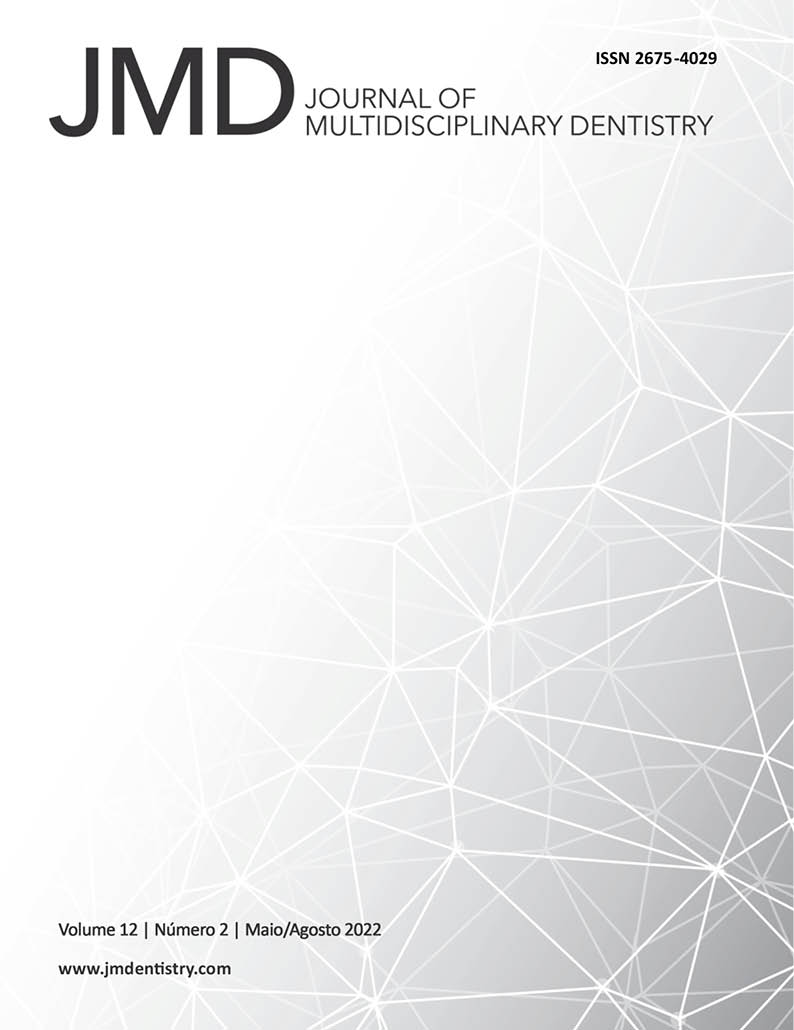Self-ligating orthodontic appliance in the treatment of Class III malocclusion: a case report
DOI:
https://doi.org/10.46875/jmd.v12i2.1111Keywords:
Malocclusion, Angle Class III, Prognathism, Orthodontic appliances, fixedAbstract
The objective of this study is to present and discuss a clinical case in which compensatory treatment was performed on a patient with bilateral anterior and posterior crossbite, Class III molar relationship, with atresic upper arch and expanded lower arch. To perform the treatment, a passive self-ligating fixed appliance of the Damon Q type was used, thermoactivated wires, TMA and Stainless Steel, intermaxillary elastics 1/8”, 3/16” and 5/16”. The proposed goals were achieved with good results. After 1 year and 3 months of treatment, the ANB angle increased by 0.45 degrees, ideal overjet and overbite, anterior and posterior crossbite correction, and improvement in the integumentary profile were obtained. Therefore, the correct use of intermaxillary elastics for bite uncrossing, Class III mechanics and also for Intercuspation was essential. It is concluded that the conduct for the patient in question was satisfactory through the use of a passive self-ligating appliance, with the correct sequence of orthodontic wires and intermaxillary elastics, given that she was very collaborative in the use of accessories and elastics


